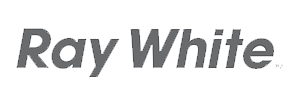 Did you know you can buy an investment property and make a comfortable profit without having to sell everything you own, or spend years saving for a deposit. Even with today’s rising property prices it is possible, and it’s called using your home’s existing equity.
Did you know you can buy an investment property and make a comfortable profit without having to sell everything you own, or spend years saving for a deposit. Even with today’s rising property prices it is possible, and it’s called using your home’s existing equity.
Equity is the market value of your home minus the amount you owe on your mortgage. For example, if your home is worth $500,000 and your mortgage is $200,000, your equity will be $300,000.
If you then wanted to buy an investment property worth $150,000, you may be able use some of the equity in your home to purchase or as a deposit towards purchasing the investment property.
Note, the equity of your home is based on the current value and not the purchase price. Your property has probably increased in value over time (as much as 14% year-on-year in some cases) not taking into account any renovations or new features.
Assessing how much equity is available
In order to truly understand the amount of equity you have at your disposal, you first need to receive an independent property valuation. This is an in-depth valuation which goes beyond the services provided by a real estate agent’s appraisal, and will be a mandatory requirement of most banks or lending institutions.
The next step is to consult with a mortgage broker. You need advice on how your investment property loan will be structured as well as on how much you will need to borrow at the outset. Following this, the bank needs proof that you are able to handle the credit facility you want to take out, so a rental appraisal is also generally required.
How much can you borrow to buy your first investment property?
The amount you can borrow is going to be subject to the amount of equity you've built up in your home and other criteria, such as the loan-to-value ratio (LVR) restrictions set by the Reserve Bank. Even if you own your home outright you are likely to be limited to borrowing a maximum of 80 percent of the property's value, less the amount owed.
In the example above, 80 percent of the $500,000 property is $400,000, minus the $200,000 owed, which leaves $200,000 of available equity which can be put towards an investment property.
Banks are known for being conservative and considering a number of scenarios, such as how a rise in interest rates could affect your ability to service the loan. Even so, depending on how buoyant that market is, banks have been known to lend amounts in excess of your available equity. That said, using up all your available equity is a risky move, which is why many people choose to keep some as security in case the bank’s worst predictions come true.
Risks of using your home's equity to buy an investment property
Using your equity to secure an investment property certainly isn’t without its risks.
Another property means another mortgage. Like any loan, you must be able to service it or you risk losing the property. That means if your income changes, you’ll still need to make the repayments.
What happens if property prices go down? Well this will leave you with a loan to pay that is larger than what your home is worth.
We recommend talking to your bank or mortgage broker to understand all the risks involved with using your home's equity to buy your first investment property.
Think you have what it takes to be a landlord and manage your first rental property? Download our guide to property management essentials to help you on your journey.










